The Sapling has asked two first-time middle-grade authors, Felicity Williams and Weng Wai Chan, to interview one another about their first novels and how they went about getting them published.
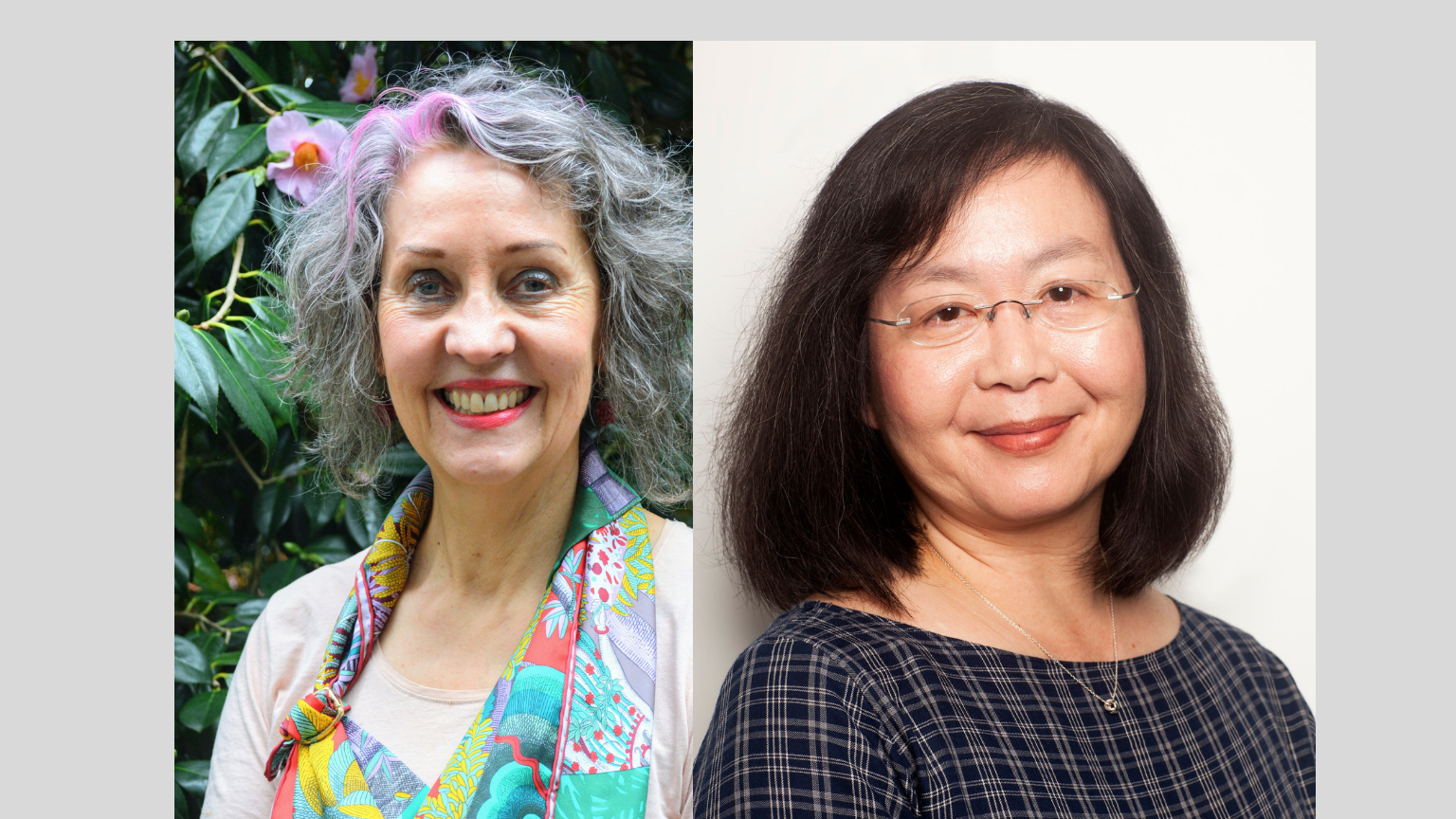
F: The route to publication is enormously difficult.
‘Take a cold hard look at yourself . What you are about to do is bloody hard. What lies ahead for most of you is months, perhaps years of frustration. It can dent your confidence. It can crush your self-esteem. Your dream may never come true. This can be a soul-destroying experience. Do you have what it takes to get through this?’ (Scott Pack, intro to How to Perfect Your Submission)
F: What does it take to get published, how did it work for you?
W: For me, it took passion, perseverance and learning the craft of writing. I wrote my first manuscript with just passion and perseverance. That manuscript won’t be published – it was rightly rejected by publishers, who said that the idea was good but the writing wasn’t good enough. I asked Janice Marriott my manuscript assessor, what it took to get published, and her answer was: an unusual story – something that hasn’t been done before. How about you?
For me, it took passion, perseverance and learning the craft of writing. I wrote my first manuscript with just passion and perseverance.
F: I’m incredibly determined. I remember Margaret Mahy saying to me once, ‘you don’t have to have a big ego to be a writer, but a tough one.’ She’s right. With submissions you need an excellent query letter, a succinct synopsis and you typically send the first three chapters. And a novel that is so polished you need sunglasses. Scott Pack’s book was my bible. It is said that publishers get hundreds of submissions every day and I suspect one’s letter gets read by an intern and then dumped in the notorious slush pile.I did a live pitch slam with two international publishers at Storylines. The first said there was no market for my novel in North America, the other, Australian-based, said, ‘an excellent pitch, please send me the first chapter directly.’ Ultimately, I will be forever grateful to Mary McCallum from The Cuba Press for jumping in the deep end with me and I hope we can continue to swim along together. Query letters will haunt me for the rest of my life.
F: I’m interested to know about your ‘credentials’. University? The School of Life? What was valuable to you in terms of study and training, including involvement in past projects, which contributed to you being able to “write” effectively enough to not only complete a novel, but then to go on to secure a publisher?
W: I did an eight week writing course with Janice Marriott in 2013, and a few workshops, but most of what I learned about the craft of writing was from reading many books and blogs. I’m still learning. The School of Life is a great way to put it. Being born in Singapore with a father who grew up in poor but colourful Chinatown, being a voracious reader, enjoying biographies about English colonial life, reading WWII stories because my kids were interested in those – all these fed into the writing of Lizard’s Tale.
As for my university credentials, I attended Auckland University and did a medical degree. Ten years working as a doctor allowed me to see people in a range of sometimes extreme circumstances. Birth, death, trauma, illness, boredom, pain, joy, anger – it was a real privilege and I hope I took away from it empathy and acceptance. I’ve hung up my stethoscope now though, to pursue writing.
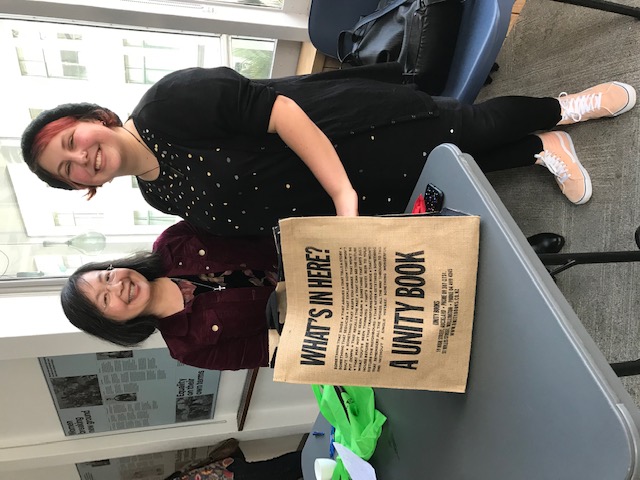
W: It took both of us several years to write our books. Getting published is a long process that involves many steps, from writing the first draft to seeing your book in a book shop. What was your single most important step to achieving publication?
F: Nine years for me from inception to acceptance. I wasn’t getting anywhere with my submissions, it’d been a year, and I said as much to Rachael King, a successfully published author and currently director of Word Christchurch. She took the time to help me and emailed me with several suggestions, including this one, ‘Mākaro Press is doing some great children’s books.’ I followed up on all her suggestions, and got one nibble. On the basis of that (exhausted from overuse) query letter and the first three chapters, they requested the full manuscript. Elation!
But two fin flaps forward, one backwards. Mary came back and said ‘not a yes, not a no,’ they would look at it a second time provided I addressed their concerns as per the reader’s report. I ended up spending the next year working with the reader – Anna Golden, a freelance editor, and it was a brilliant year, I learnt so much from working with her.
I resubmitted; it was a yes. The first step might be regarded as serendipitous, the second was a commitment to being coachable. An investment in a good editor is essential. Mary McCallum had started up a new company The Cuba Press, with Sarah Bolland as co-director, and they accepted my novel for publication. It came with a strong recommendation from my editor Anna Golden, whom they contract to edit some of the Ahoy! titles, and the rest is history.
The first step might be regarded as serendipitous, the second was a commitment to being coachable. An investment in a good editor is essential.
W: I really enjoyed the wonderful setting, clever language and humorous elements of Ringlet’s quest! Ringlet and the Day the Oceans Stopped is an underwater fantasy with a detailed fictional world. Even though it is a fantasy, how much research did you do and can you tell us some of the things you found out about mermaid mythology?
F: I wanted to deconstruct conventional notions of mermaid folklore while still retaining the inherent whimsicality. Research was done consistently as I went. Globally, mermaids don’t differ much in their depiction, so I felt the genre was overdue for exploitation.
I have a huge online folder of articles, from bio-luminescence to Christian Louboutin. Nearly everything in the novel has some basis in anthropological accuracy. But my mermaid mythology was entirely invented. I have a file with about fifty different versions of the gloriously mysterious first verse of Genesis – a verse which is represented across many religious texts. Then I wrote my own version in ‘The Legend’ at the start of the book, adding twists.
Many mermaid books have mermaids popping out of the water and conversing with humans from a conveniently placed rock. From the outset I decided that my mers would be like fish – 100% underwater dwellers. That presented its own challenges in terms of language, in particular verbs. There are myriad ways of describing how humans move on land, but for a mer species, far fewer. There is only one exception to this – an indulgence I allowed myself when the winged seagoat soars momentarily out of the water. I guess my mers might have a brief 30 second out-of-water window opportunity for survival. Like humans but in reverse.
F: Back to the technical stuff. How long did ‘Lizard’ take to write, and a bit about your process. Do you map out structure first? Or play it by ‘pen’? What’s the balance between intuition and a predefined story architecture?
W: I started it in 2013, then a manuscript assessment saw me take another year to re-draft. I entered it into a pitch competition run by the NZ Society of Authors, where it was accepted by Text Publishing in 2017. The book came out in July 2019.
My process for Lizard’s Tale began with the scene of a boy hidden in the shrubbery at Raffles Hotel and then I asked myself who he was and what he wanted. I wrote to answer those questions, and just kept going in a mostly linear fashion – i.e. I was definitely a ‘pantser’, with no outline. I also read a lot about story structure and allowed that to inform the writing too. I also learned a lot from my wonderful editor Jane Pearson at Text.
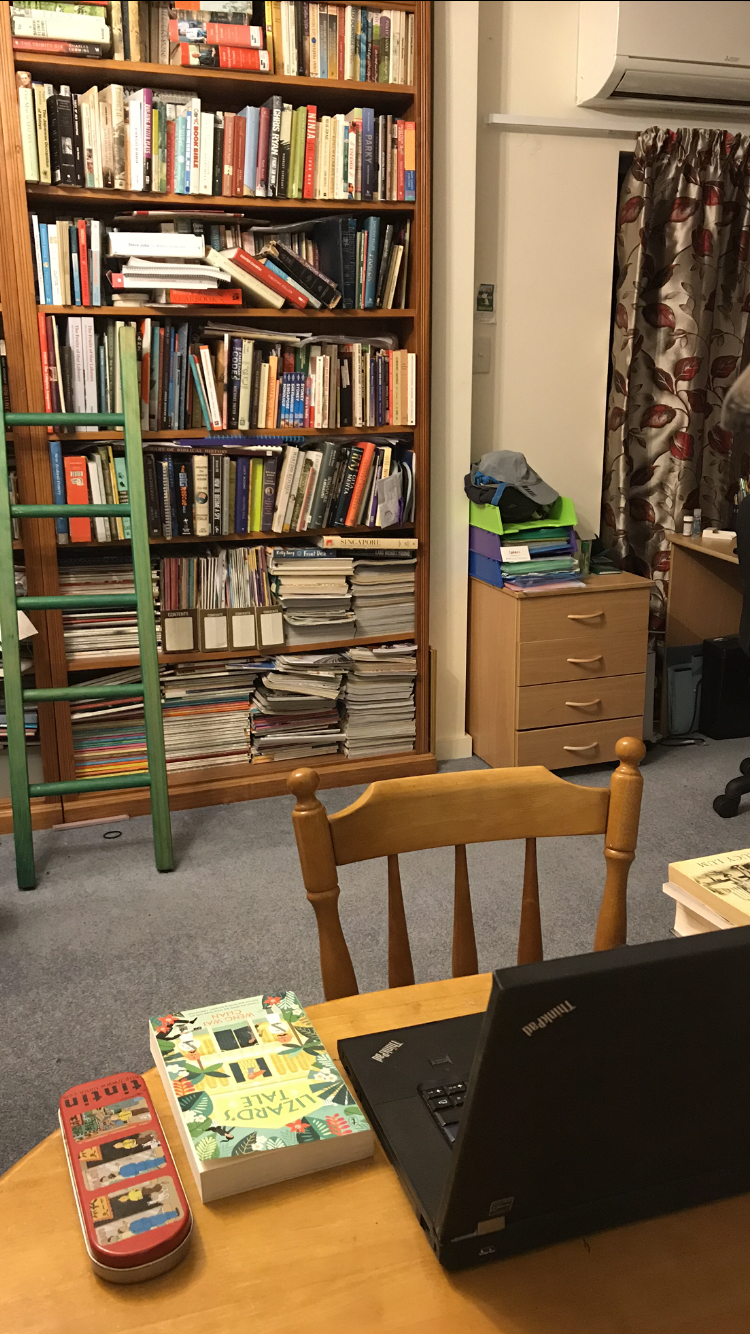
W: I’m also interested in whether you had an outline before you started, or if you were more of a ‘pantser’, like me.
F: I spent years mapping out a traditional hero’s quest. I graphed every step. And then some. I read Vogler, The Writer’s Journey, over and over. That book dissects the classic mythic structure that informs my novel.
I spent years mapping out a traditional hero’s quest. I graphed every step.
F: As far as genres go, Lizard is a fast paced mix of spy story and war thriller isn’t it? How do you ensure accessibility for children 9–13 years when your setting is hovering on the edge of a war zone? How do you make it historically accurate and yet still a ‘fun read’? I knew very little about the impending invasion of Singapore which hangs over the book so ominously – so I was motivated to research as I read – which means you’ve done an excellent job with this reader I think!
W: The hardest thing was that I wanted it to be historically accurate but I didn’t want to foster hatred in any way. I put in as little as I could get away with about politics and war and cut out anything that I thought was boring. To make it a fun read I tried to incorporate action, conflict, jeopardy, emotion and humour.
F: What do you want your readers to take away from Lizard’s Tale?
W: I want my readers to have empathy for those who don’t look or sound like themselves. And you?
F: I simply want Ringlet to be an enjoyable read, because reading is, after all, a leisure time activity! ‘The man thudded to the floor like a falling durian.’ I might get some odd looks, but I intend to incorporate that into my vernacular starting today! I love the way you flavour the novel with idiosyncratic phrases, which place the reader effortlessly inside a Raffles party, a Chinatown slum . . .

F: How does a writer balance the need for descriptive passages with dialogue that drives a story forward?
W: I describe the scene as I see it with as few words as possible. The words that are left out are as important as the ones on the page. I tried to keep similes and metaphors fresh by adding a Singaporean flavour to them, especially after my dear editor Jane wrote ‘cliché’ next to a phrase during editing – ouch. Your novel too, is flavoured with many beautiful images – from the cluttered glory of Ninky’s Boutique, to the Pearl Promenade to the multi-coloured flames of the ferocious whirlpool.
W: How do you come up with these images? Has your previous work writing plays, scripts and music informed your novel writing in any way?
Your novel too, is flavoured with many beautiful images – from the cluttered glory of Ninky’s Boutique, to the Pearl Promenade to the multi-coloured flames of the ferocious whirlpool.
F: Oh it most certainly has and continues to do so. Teaching in my drama school allows me to be a privileged intruder into the world of the child. I want the oddity, not the commodity.I’m obsessed with points of difference. In a way, that’s the whole theme of the novel. The importance of restlessness, and the interconnectedness of all living things. The merwoman Plaitita sees ‘the great eternal restlessness’ as a threat to her desire for rules and order. But I believe that restlessness is the necessary intellectual mayhem that brings forth creativity and the birth of new ideas. I do have a restless mind, but if I didn’t, I suppose I couldn’t imagine the things you’ve mentioned above, so I’ve learned to live joyfully with it.
Let’s move from language to characters. Your three child characters: Lizard, a street kid, and an orphan, Lili, a smart spy-operative, and Georgina, privileged and a tad bored. What’s your advice to writers about building believable characters?
W: Make them engaging, give them feelings and give them flaws. I see that you already have one request for a follow up to Ringlet’s story. Will you be making young beta reader Gabriel happy with a sequel?
F: Well let’s see how children like this book for a start, but yes, I have started a sequel . . . you?
W: I’d like to write another middle-grade book set in a similar time and region. There are still many stories to explore there.
F: And now the most important question of all . . .Do you have your family recipe for curry puffs? Because I really want to try!
W: I do have a recipe for curry puffs, but you can get delicious ones from your nearest Thai restaurant!
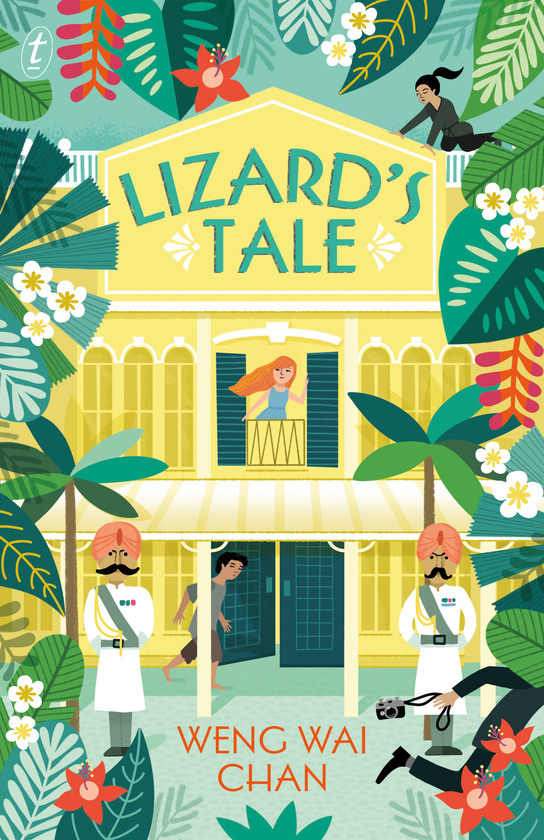
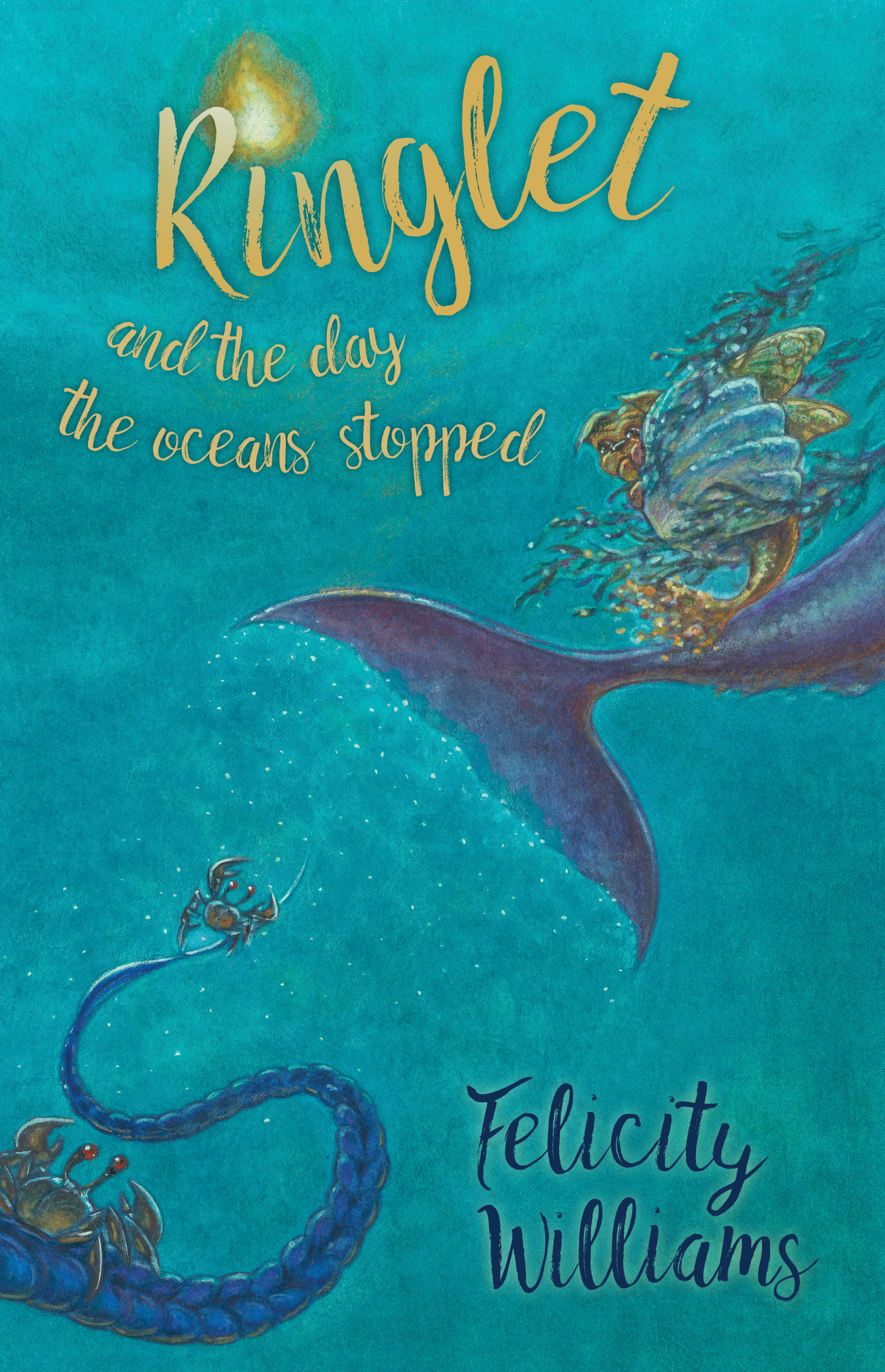
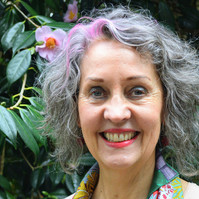
Felicity Williams
Felicity is currently owner and director of Canvas Bag Drama School and the rest of the time she writes. Ringlet and the Day the Oceans Stoppedis her first novel, though she has written many scripted plays and operettas for children. You can find out more about her here.



